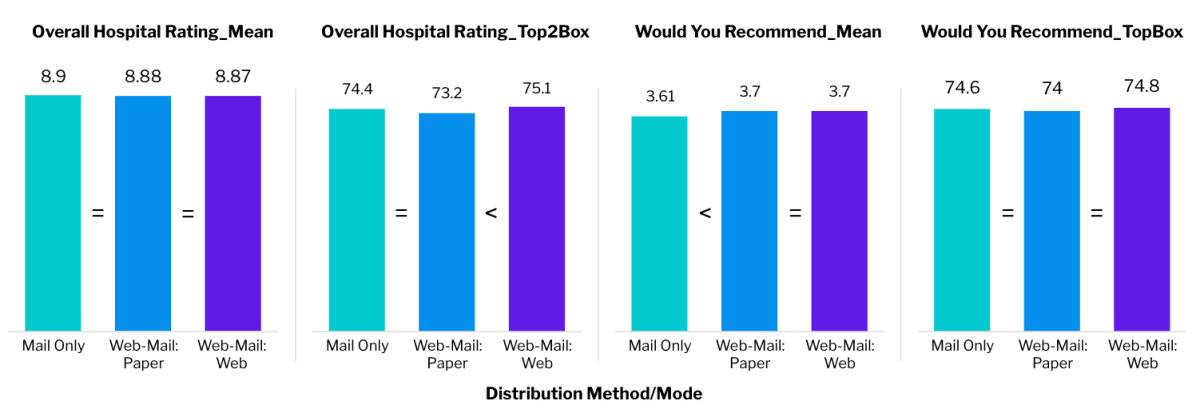Patient experience is a crucial aspect of healthcare, and understanding the factors that influence it is essential for continuous improvement. A recent analysis of HCAHPS data sheds light on the impact of its new survey methodologies and identifies key drivers of overall hospital ratings.
The impact of the web-mail distribution method
The introduction of the new "Web-Mail" distribution method for HCAHPS surveys has brought about significant changes in response patterns and respondent demographics.

* This analysis includes data from 2024 to 2025 Q1. Client and year effects were controlled. Different superscripts indicate being in groups that are statistically different from each other.
Higher response rates and shorter lag times: The Web-Mail method has led to higher overall response rates, and the Web mode exhibits a 24-day shorter response lag compared to Mail Only surveys. This reduced time lag is often associated with lower recall biases and more positive patient experience scores.
Shifts in respondent demographics: While a shorter response lag generally correlates with higher scores, clients transitioning to Web-Mail have observed a decline in raw scores. This is primarily attributed to a demographic shift among respondents. The Web mode tends to attract a population that is younger, healthier, more educated, and more diverse in race. For instance, Web respondents are significantly younger and report better mental and physical health compared to those responding via Mail Only. They also show higher education levels, while Mail Only respondents are more likely to be White and report English as their primary language.
Addressing demographic effects: It's crucial to account for these demographic changes, and CMS's patient-mix adjustments are recommended to address these shifts. When these demographic factors are controlled for, both Web-Mail and Web modes generally result in more positive or at least non-negative patient experience scores compared to the Mail Only method.

Key drivers of overall hospital ratings in 2025
The 2025 HCAHPS changes, including new question items and composites, have improved the ability to explain overall hospital ratings.
Nurse communication remains paramount: Nurse communication continues to be a critical driver of overall hospital ratings. A newly added question about "doctors, nurses and other hospital staff working well together" has emerged as the primary influence in this domain.
Care coordination's evolving role: The "Care Transition" domain has been replaced by "Care Coordination," and it maintains a similar level of importance in predicting overall hospital ratings.
Actionable recommendations: Based on these findings, the recommendation for 2025 is to continue efforts in improving nursing communication and to enhance the focus on care coordination across all roles within the hospital. By understanding these dynamics in patient feedback and focusing on key areas like nurse communication and care coordination, healthcare providers can work towards continuously enhancing the patient experience.



